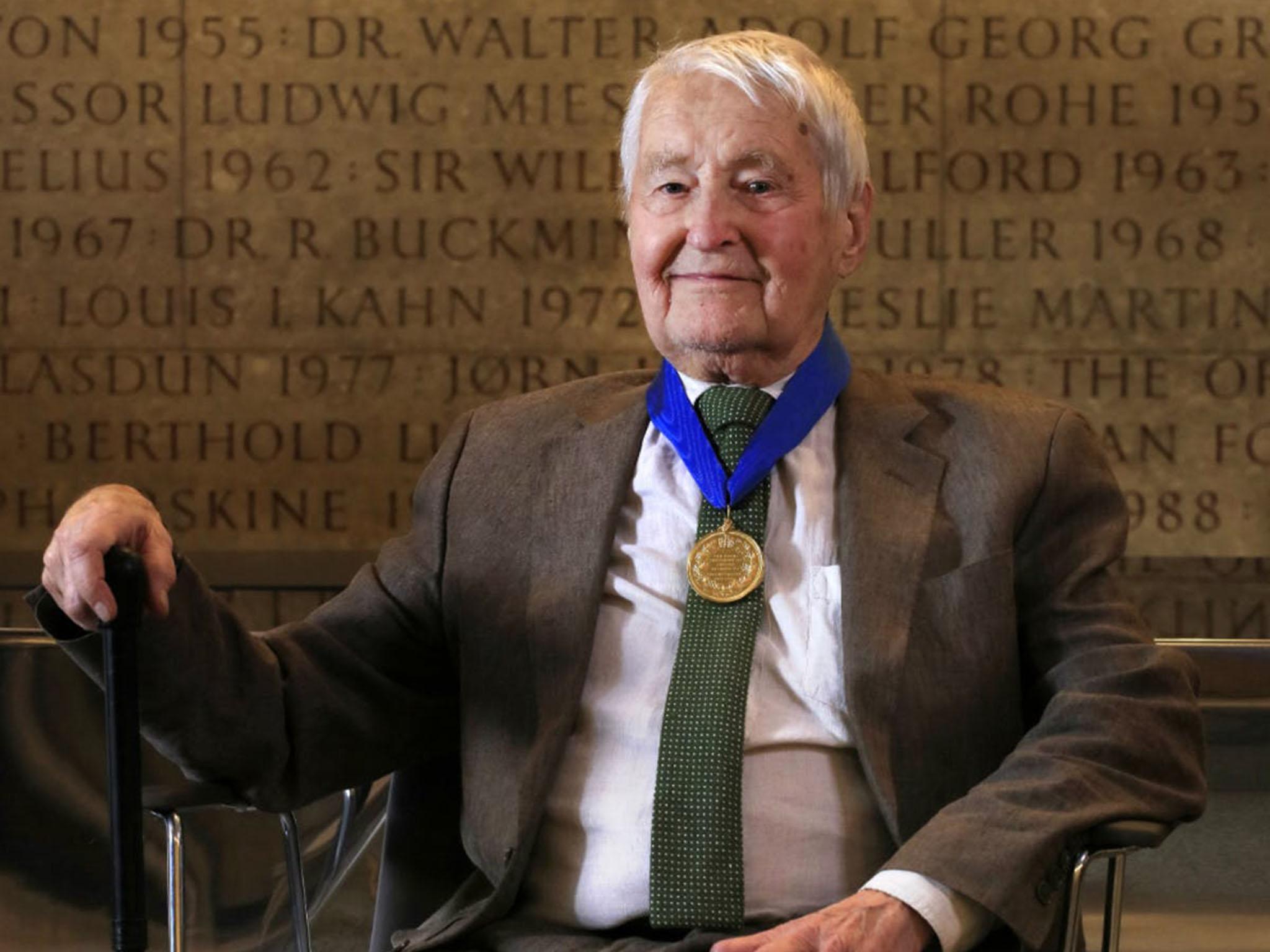Neave Brown: Pioneer of low-rise, high-density social housing whose entire back-catalogue took listed status
The architect abhorred class divisions and sought to serve people on lower incomes with properties that were not just affordable but eminently enjoyable

“High buildings should only be used for the very rich,” said architect and social housing pioneer Neave Brown in the aftermath of the Grenfell Tower disaster.
Speaking to online magazine Dezeen, he said: “Almost all those point blocks and slab blocks should never have been built because they ostracise the underprivileged into special places for the poor, and therefore they become colonies of underprivileged people,"
In paying tribute to him, Royal Institute of British Architects (Riba) president Ben Derbyshire summed Brown’s contribution to residential urban buildings in the Sixties and Seventies “His ideas, for low-rise high-density housing with private outside space for all residents, still stand as a radical antidote to much of the unthinking, not to say degrading, housing product of the era,” said Derbyshire.
In October Riba announced him its 2018 Royal Gold Medal winner – the highest honour for architecture, personally approved by the Queen. Brown, who has died 88, was born in the city of Utica, New York state, to a British father, Percy, a businessman, and an American mother, Beatrice, who worked in publishing.
As a teenager, he came to the UK to be educated at Marlborough and won a place to read English at Oxford. After doing national service he signed up to study at the Architectural Association in London.
Once qualified, he worked first as a designer of schools for cutting-edge firm Lyons, Israel and Ellis, and later for Middlesex County Council.
From there he went on to set up his own private practice and together with some friends built five terraced houses in the modernist style on Winscombe Street in Highgate, north-west London. One of these became his family home for 40 years.
The houses on Winscombe Street were completed in 1965 and Grade II-listed in 2014. English Heritage recognised in their design “a distinctive community spirited vision of home life.”
Building homes that fostered community was Brown’s passion.
Having built Winscombe Street, he left private practice for the architect’s department at Camden Council. It was while he was working for Camden that he would design and build what was to be his career defining development – the Alexandra and Ainsworth Estate in Swiss Cottage, also in north-west London.
The estate, which comprised 520 apartments, a school, a community centre, a youth club and park, adhered to Brown’s guiding principle that every unit should have its own front door and its own piece of private outdoor space.
The building was completed in 1978 having run over budget. Camden Council called an inquiry into the overspend which, it turned out, exonerated Brown. However, he later claimed that the incident effectively ended his career in the UK, saying, “Nobody is going to employ an architect, no matter what the results, that has been in a public inquiry.”
Despite its controversial beginnings, the Alexandra and Ainsworth Estate was immediately popular with residents and when it was listed in 1993, the then Heritage Secretary, Peter Brooke, described it as “one of the most distinguished groups of buildings in England since the Second World War”.
Feeling unable to work as an architect in the UK after the inquiry, Brown took his expertise overseas. His last development, the Medina in Eindhoven, Holland, was completed in 2002.
After that, Brown retired from architecture and turned his attention back to his first love – fine art – studying for a BA at the City and Guilds of London School of Art.
He also continued to speak on the subject of social housing and was given a standing ovation after an appearance at the Hackney Empire.
Expanding on his comment that only the rich should have high-rise buildings, he explained, “because they’re the only ones that can be done with proper lifts, proper services, proper control, proper entrances and the proper environment.”
Brown considered poor social housing to be one of the biggest problems facing the UK today and without action to improve the situation, “Our society is going to break down. It is as urgent as that.”
As he was recognised for his pioneering work so long after its inception, he further told Dezeen, “We thought our work – and I’m not just talking about me – was going to be the beginning of a linear devolvement that would go on into the future, but it was cut off absolutely by Margaret Thatcher.”
Still, his work endures. He remains the only architect to have all his UK developments listed.
He spent the last years of his life living on the Dunboyne Road Estate, which he designed in 1977. In 2015 he told The Guardian that he would choose to live nowhere else. His said he belonged to a generation who “would help build a new and mixed society – eliminating the old class system. Unfortunately many of us feel disappointed. The triumph of capitalism has betrayed the egalitarian ideals that we had.”
Brown is survived by his wife, Janet Richardson, two daughters, a son and six grandchildren.
Neave Brown, architect, born 22 May 1929, died 9 January 2018
Subscribe to Independent Premium to bookmark this article
Want to bookmark your favourite articles and stories to read or reference later? Start your Independent Premium subscription today.

Join our commenting forum
Join thought-provoking conversations, follow other Independent readers and see their replies